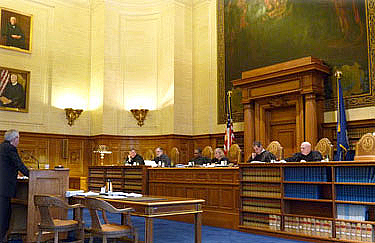
- Directories Home
- Administration - PDF
- Adult Probation
- Bail Services
- Court Service Centers
- Court Support Services
- Family Services
- Family Support Magistrates
- Geographical Areas
- Housing
- Judges
- Judicial Districts
- Juvenile Detention
- Juvenile Matters - PDF
- Juvenile Probation
- Law Libraries
- Magistrates - PDF
- Probate Courts
- Small Claims
- Staff Phone Directory
- State Marshals
- Support Enforcement
- FAQ Home
- About Attorneys
- Adult & Juvenile Offenses for 16-yr olds - PDF
- Adult Probation
- Americans with Disabilities Act
- Bail
- Child Support
- Connecticut Law Journal
- Court Records
- Divorce
- DOJ Civil Rights Complaints
- Domestic Violence
- E-filing FAQs - PDF
- Family
- Foreclosure Mediation
- How can I complain about a judge?
- Jury Service
- Juvenile Matters Links
- Juvenile Probation
- Juvenile Residential Services
- Landlord/Tenant/ Housing
- Language Help (LEP)
- Law Libraries FAQs
- Legal Clinics and Help
- Legal Notices by Publication
- Media
- Minimum Continuing Legal Education
- Online Dispute Resolution
- Prison Rape Elimination Act (PREA)
- Probate Court
- Representing Yourself
- Small Claims
- Traffic Violations
- Victim Services
- What is CSSD?
Overview of the Supreme Court
Virtual Tour of the Supreme Court
What Happens after Oral Argument?
The court hears three or four different cases on each day on which oral
arguments are scheduled. After the oral arguments have been finished, the
court meets, in its conference room, to reach a preliminary decision about
the outcome of each case. When the justices disagree, the greater number
becomes the majority of the court on that case. After all the cases in each
session of the court have been heard and discussed, the Chief Justice
assigns each case to one of the justices in the majority to prepare a draft
opinion.
 For each of his or her assigned cases, the justice reads the
record of earlier proceedings and researches the law of Connecticut and
often of other states, as well. Preparing a draft opinion takes time because
it requires careful analysis of the law and the facts and preparation of a
persuasive written document for the court and the parties. Sometimes, work
on a draft opinion persuades the justice that the case should have a
different outcome than that voted at the initial conference. In that event,
the case will be discussed again at another court conference. The court may
then vote to change the outcome.
For each of his or her assigned cases, the justice reads the
record of earlier proceedings and researches the law of Connecticut and
often of other states, as well. Preparing a draft opinion takes time because
it requires careful analysis of the law and the facts and preparation of a
persuasive written document for the court and the parties. Sometimes, work
on a draft opinion persuades the justice that the case should have a
different outcome than that voted at the initial conference. In that event,
the case will be discussed again at another court conference. The court may
then vote to change the outcome.
Once the proposed outcome of a case is
finally determined, a draft opinion is prepared and circulated for extensive
comments by the other justices who heard the case. A justice who agrees with
the outcome, but not with the analysis of the majority opinion, writes a
separate concurring opinion. A justice who disagrees with the outcome, in
whole or in part, writes a separate dissenting opinion. A final opinion for
the court is voted at a court conference after all the opinions have been
circulated and agreed upon. The majority opinion and the separate opinions
are then sent to the Reporter of Judicial Decisions. The reporter checks the
opinions for technical accuracy, and sees to their posting in the
Connecticut Law
Journal. When the opinions are finalized, the parties receive
notification of the result and the opinion is then published on the Judicial
Branch website as an Advanced
Release Opinion. Within the next two weeks, the opinions are published
in the Connecticut Law Journal by the Commission
on Official Legal Publications.
A
party that disagrees with the
judgment of the Supreme Court may file a
motion for reargument or for
reargument en banc. If that motion is denied, the party can seek permission
to file an appeal in the
Supreme Court of the United States, but only if the case involves an issue
of federal law. On questions of state law, a decision of this court cannot
be further appealed. The legislature is always free, however, to change the
applicable law within constitutional limits.
Home | Common Legal Words | Contact Us | Related Links | Site Index | Website Awards | Policies and Disclaimers | CT.gov | Public Defender Services
Connecticut Judicial Branch © 2017